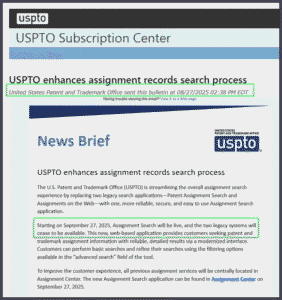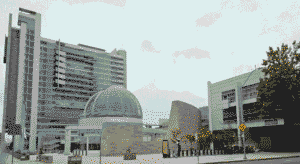What could be more fun than a full day of PCT training? The answer, of course, is a full day of PCT training followed by a reception. Continue reading “And a reception after the Dallas PCT seminar”
Four upcoming opportunities for PCT and ePCT training
As a reminder, folks, there are four upcoming opportunities for PCT and ePCT training, all of which will include me as a presenter.
-
- National Docketing Association annual meeting, San Diego (brochure page):
- Monday, October 6, 3:15 PM PT – Making Best Use of ePCT for PCT Docketing (75 minutes)
- Tuesday, October 7, 1PM PT – Mastering PCT Docketing (60 minutes)
- Friday, October 24, Dallas Patent Office (brochure page) – Patent Cooperation Treaty (PCT) and ePCT seminar (full day)
- Tuesday, October 28, Detroit Patent Office (brochure page) – Patent Cooperation Treaty (PCT) and ePCT seminar (full day)
- National Docketing Association annual meeting, San Diego (brochure page):
Reduction In Force at the USPTO
An article just now in The Guardian says:
In a memo seen by the Guardian, the US Patent and Trademark Office (USPTO) announced a “reduction in force” (RIF) program of layoffs at the agency on Wednesday, the first reported agency to do so.
“Approximately one percent of the USPTO workforce will be affected by this RIF,” wrote Valencia Martin Wallace, acting commissioner for the USPTO, wrote to employees at the agency. The USPTO did not respond to a request for comment
USPTO blinks on shutdown of familiar assignment searches

(Update: every USPTO system relating to assignments is now broken on October 16, 2025, see blog article.)
On August 27, 2025, the USPTO said (quoted at right) that Saturday, September 27, 2025 was the day that the USPTO would shut down the two familiar assignment search systems, forcing users over to a new assignment search function in Assignment Center.
It appears the USPTO has blinked and will postpone this shutdown for about three weeks, until Monday, October 20, 2025. Continue reading “USPTO blinks on shutdown of familiar assignment searches”
A “reminders” document that might help with 101 problems
On August 4, 2025, the USPTO’s Deputy Commissioner for Patents (Charles Kim) published a document entitled Reminders on evaluating subject matter eligibility of claims under 35 U.S.C. 101 which you may see here (archived here). I think the document may be of some help for applicants facing 101 rejections. Continue reading “A “reminders” document that might help with 101 problems”
A decision that might help with 101 problems
(A commenter pointed out a mistake in this article — the applicant apparently did not appeal to the ARP. What apparently really happened is that the ARP, sua sponte, chose to take action. I fixed it. Thanks to the commenter.)
Today the USPTO published a decision called Ex parte Desjardins et alia, 2024-000567 (Appeals Review Panel, September 26, 2025). a copy of which may be seen here. It looks like this decision may be of some help to applicants facing 101 rejections. Continue reading “A decision that might help with 101 problems”
EBC continues to foot-drag handling of Form 2248
(Update: by now almost four months have passed and the EBC has still not acted upon either of the Forms 2248. See blog article.)
It is now six weeks ago that I followed instructions from the EBC and used fax to send in a Form 2248 in two of my PCT cases. (See blog article.) Yes, six weeks have now passed during which EBC continues to fail to act upon either of the Forms 2248 that I sent to them.
Please register for my 2½-day PCT seminar that starts on September 30
Folks, there are still seats available for my 2½-day PCT seminar that starts on September 30, 2025.
Please register for this seminar. For more information, or to register click here.
What is better — an RCE or a continuation?
I just got done paying the fee for a second RCE in one of my clients’ cases. Ouch! $2860 for a non-small entity.
I then went to the trouble to add up the filing fee, search fee, and exam fee that would have been paid in an ordinary continuation. Looks like that adds up to $2000.
I note that the number 2000 is smaller than the number 2860.
Which got me thinking about the question of the subject line. What is smarter to use — RCE or continuation? Continue reading “What is better — an RCE or a continuation?”
Hoping to see you at today’s PCT class in San Jose

Hello loyal readers. Hopefully many of you have logged in to attend this PCT seminar that is taking place right now at the San Jose patent office.

I am delighted to report that we have some thirty-two in-person attendees as well as some eighty-two virtual attendees.
